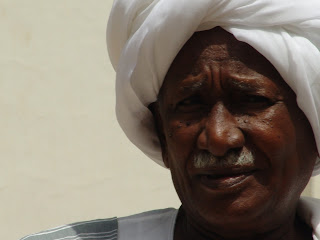The pace of the post-referendum negotiations between the National Congress Party (NCP) and the Sudan Peoples’ Liberation Movement (SPLM) picked up again after the recent phase of recalibration. During the past few weeks the two partners re-engaged in greater quiet, a sign of health, when considering the freaking out that invited the intervention of Presidents Bashir and Kiir earlier in the month.
Speaking on Tuesday the NCP’s deputy chairman, Nafie Ali Nafie, categorically rejected any possibility of extending the term of the Comprehensive Peace Agreement (CPA) beyond the 9 April in order to facilitate a smooth conclusion of the secession talks. Apparently, Khartoum intends to employ time against Juba’s negotiators, the statesmen who are yet to mould a state out of the territory under their command. The time factor that served the SPLM well in the run up to the vote may now be acting against it. While the late Garang, had he survived the CPA, could have claimed the location of a victorious Lumumba in the history of South Sudan, the new state, in the absence of a central figure of liberation authority, is grooming several wannabe Tshombes. Peter Gadet, out of all the warlords of the 1990s, is spinning himself into an independence menace, one that is expectedly more ominous that the elections associated rebellion of Athor and Co. In his Mayom Declaration of 11 April Gadet offered the standard criticism of the SPLM government, corruption, failure to maintain security, the partisan nature of the national army to become – the Sudan Peoples’ Liberation Army (SPLA), and domineering politics. “The leadership of the SPLM was abusing our patriotism for their narrow interests” argued the professional rebel.
Gadet entered the war scene in Sudan as a commander in Paulino Matip’s notorious militia. He played a pivotal role in securing the oil fields of Unity state for the Khartoum government and its investment partners, Chinese, European and Canadian, in the late 1990s. Gadet and his militia joined arms with the SPLA in 1999, defected back to the Sudan Armed Forces (SAF) in 2002, and eventually integrated into the SPLA in 2006. Yesterday, his forces engaged the SPLA in Mayom, Unity state, allegedly together with (Northern) Misseriya fighters. In anger, the authorities in Unity state decided to expel all Northern Sudanese staff working in the oil facilities of the region, on the grounds that it is Khartoum that commands Gadet’s guns.
President Kiir once stated that the secession vote will surely not alter the geography and demography that binds the North and the South. In spokesman mode Yasir Arman, the Secretary General of the SPLM’s Northern Sector, picked up Kiir’s comment and turned it into “the South will not be the South of Brazil”. While Arman probably had the South-North earth and blood connections in mind, notions that he excels in celebrating in suggestively mediocre poetry, Kiir, the intelligence officer, might find the argument handy in a much more practical sense. Faced with mushrooming rebellions despite his repeated attempts at accommodation Kiir may soon be faced with the choice between turning his anti-insurgency efforts into a ‘nationalist’ campaign with the claim of facing up to a Khartoum-orchestrated plot or alternatively seeking Khartoum’s assistance to control the strategic oil states, Unity, Upper Nile, and Jonglei, which harbour the loci of anti-Juba rebellion and happen to border the North. In his recent interview with the Guardian President Bashir hinted at such a possibility when he reaffirmed his readiness to help the Government of South Sudan attain stability. The point here is that Bashir and Kiir share an interest in bargaining the terms of this stability rather than fighting it out. The first needs a more generous share in oil and the second obviously more intelligence and military liaison with the oil-fields former caretaker.





No comments:
Post a Comment